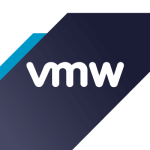We have created a zone-based setup in Cloudstack where each zone represents a physical datacentre. Each zone has a few servers/hypervisors with predefined VM templates.
We have a portal where a user just clicks a few times and gets a VM ready for use. We use API in the background, which gives instructions to Cloudstack to produce the desired results.
Cloud computing has improved the way our organization functions. With virtualization, physical hardware has been replaced with virtual devices hosted on CloudStack. What CloudStack does is make the management of servers and VMs easy and centralized.
Also it has become easy to deploy new devices with no or minimal hardware changes. Now, a user can be ready to use a firewall within a few minutes, as compared to the traditional physical model which involved purchase, shipping, hardware configuration, cabling, power, etc.
We use CloudStack because it is simpler than OpenStack and has most features required to be an IaaS orchestration tool.
- CloudStack, by default, gives us a zone-based setup which makes it easier to manage datacenters located in different geographical areas.
- It gives us the ability to manage and segregate a guest network with openvSwitch and VLAN IDs.
- While OpenStack has different components and related DB and conf files, which is difficult to manage, CloudStack has just one database and few related conf files located in a single directory.
- Most logs are generated at a single location, which makes troubleshooting easier.
This product needs a lot improvement on the development side. Every new version introduces new bugs. It lacks many features needed for NFV like DPDK, SR-IOV support, etc.
Also, it is not widely used so Google does not help very much when you are troubleshooting, and the CloudStack forum is not very active.
One to three years.
Yes, we encountered stability issues. We were using an older version on which, when we restarted the CloudStack management service, the connection would break between CloudStack and KVM hosts. This resulted in VM deployment failure. The issue was resolved after updating to the new version.
No issue with scalability.
We don’t have CloudStack support. We manage it on our own.
We were using VMware and Xen earlier, but to reduce the cost and to make management simple, everything has been moved to KVM and CloudStack. Both KVM and CloudStack are free.
We are not using the licensed version.
I rate it a seven out of 10 because it is has most features you would expect from an orchestration tool, but less complexity.










